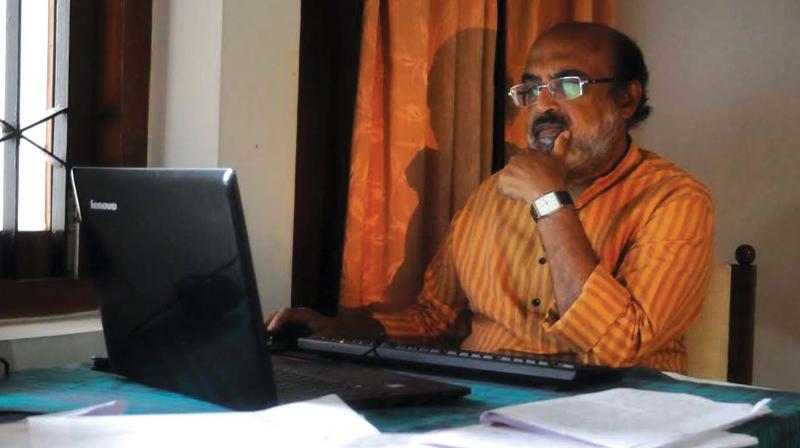A non-partisan framework for budget-making
Finding resources for capital expenditure even while retaining social welfare outlays is the dilemma that the State faces.

From a macroeconomic perspective, budget-making in Kerala should pitch itself on four pillars, three of them financial and the fourth in the realm of real-politik. It is well-known that the State’s fiscal position is tight and avenues for revenue generation are narrow. Despite its impressive social indicators, the State has been struggling with sluggish revenue growth, burgeoning salary and wage bills, higher debt and consequently larger interest payouts. According to the Budget Estimates 2016-17, the State has to spend Rs 43,200 crore on salaries and pensions and Rs 12,700 crore on interest payments out of its revenue receipts of Rs 84,600 crore, constituting a whopping 67 percent of revenue income. In 2015-16 also, the State spent roughly the same percentage on salaries and interest. How to find resources for capital expenditure even while retaining social welfare outlays is the dilemma that the State faces.
Kerala spends less than 2 percent of its State Domestic Product on capital expenditure (roads, bridges, infrastructure for hospitals, schools, etc) whereas even neighbouring Tamil Nadu and Karnataka spend about 4 percent. So resource mobilisation and efficiency of resource utilisation becomes the key to the State’s developmental expenditure. The first pillar therefore has to be targeting of subsidies. It is high time we realised that universality of welfare is neither affordable nor sustainable. The principle of “from each according to his ability and to each according to his need” should be applied to social welfare. A decision to price social services according to the ability to pay or a better targeting of subsidies will be the key to focussing the flow of resources to where it is needed most.
To begin with, Government employees, whether of the Centre or the State and public sector staff (at least above the ministerial staff) need not be given the benefit of any subsidies whether in health care, education or other services. Subsidies, meant for the poor, are being enjoyed by everybody, including people who can afford to pay. Free registration for outpatients in most Government hospitals and free/nominal fee in most educational institutions is a case in point. For instance, why can’t the State charge at least Rs 10 on OP ticket from the non-poor and utilise it for maintenance/capex in that hospital itself? Unless the State realises that charging of appropriate (not exorbitant) user fee from affordable sections, welfarism is not going to last. The sad prospect is that failing welfare will hit the poor the most just because we lack the will to charge those who can afford to pay.
The second pillar is related to attracting capital to Kerala by making the State more business-friendly. Of late, the competition among States to parade themselves as a prime destination for investments is high. We are losing out in this beauty parade. In recent rankings by the Union Ministry of Commerce and Industry and World Bank, on the ease of doing business, the State was ranked 20th among the States and Union Territories with a score of about 27 percent. Last year, even with a lower score, it was ranked 18th. The annual survey is a reliable indicator of the progress achieved by States in implementation of key business reforms. Our State is just below Delhi while the toppers this year have been Telengana and Andhra Pradesh. Last year’s leader, Gujarat, slipped to the third position this time.
Economic growth, facilitation for businessmen in setting up their units, rooting out harassment of entrepreneurs especially in the small and medium sectors and good governance are essentially administrative measures. With Kerala’s unemployment rate being the highest in the country, unless small and medium units in non-polluting, environment-friendly sectors are promoted, we are going to miss out on attracting private investments. Three areas -- clean and neat “desi” branded restaurant chains on highways, private primary health centres (not hospitals) and Skills Development Centres for students in schools including English-speaking/computer/soft skills – seem to be attractive avenues for NRI/private sector investment if the Government were to commit itself to promote them by leasing small parcels of land (not more than 10 cents). Ultimately, the State’s revenues (for spending on social sectors) have to come from heightened business activities.
The third pillar for which the foundation is already laid is the idea of the special purpose vehicles for infrastructure development in the form of Kerala Infrastructure Investment Fund Board. It is a workable scheme and resource-raising at competitive rates for infrastructure development without affecting the fisc will be possible. Already 48 projects worth about Rs 4,000 crore have been approved. The State should carry forward this potentially productive initiative to its logical conclusion. KIIFB will be the fulcrum for capital expenditure for the State in the future. In economic terms, it is an out-of-the-budget initiative with only own funds coming from the Treasury and owed funds being raised from banks. The KIIFB concept needs to be nurtured and nourished.
The fourth pillar that I would like to suggest is something which will facilitate consensus on development issues. The LDF should take the lead in constituting a State Development Council, chaired by the State Finance Minister, which should have representations from all major political parties (say, 6 of them) and an academic/economist each nominated by these parties. This SDC should be a permanent body which can meet quarterly. It will be a forum for discussing the State’s financial position, its problems in resource mobilisation and try to develop a common approach to developmental issues. Unless a consensus is built up on what Kerala should do for its development and serious business like budget-making is made nonpartisan, the State’s annual budget, irrespective of who presents it, will be full of sound and fury inside the Assembly but may not signify anything substantial to those outside.
(Author is a top bank executive. Views are personal)

